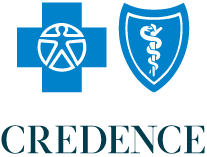A health savings account, or an HSA, gives you an easy way to enjoy some tax benefits while setting aside money to pay for medical expenses. Here's how it works.
What types of plans work with an HSA?
To contribute to an HSA, you'll need to enroll in a high-deductible health plan (HDHP) first. It's important to know that HDHPs usually only cover preventive care until your deductible has been met. Before you meet your deductible, you can use the funds you've placed aside in your HSA to pay for your "qualified medical expenses."
What are "qualified medical expenses"?
Generally, qualified medical expenses are payments for products or treatments that a doctor has said you need to treat a health problem or product your health. For example, contact lenses to correct blurry vision are a qualified medical expense. Contact lenses to change your eye color are not. Some qualified medical expenses you can use HSA funds to cover:
Addiction treatment
Breast pumps and supplies for lactation
COVID-19 tests, masks, hand sanitizer and sanitizing wipes
Copays or Coinsurance
Eye surgery to treat poor vision, like laser eye surgery or radial keratotomy
Fertility enhancement, like in vitro fertilization or vasectomy reversal
Glasses or contact lenses that correct your vision
Healthcare continuation coverage, like COBRA
Menstruation products like tampons, pads and cups
Over the counter medications for:
Pain relief
Heartburn
Allergies
Acne
Cough and cold
Sleeplessness
Pregnancy testes, birth control pills, emergency contraceptives and legal abortion
Sunscreen
Thermometers
Transportation to and from medical appointments, including fuel
What are the tax benefits for an HSA?
You can fund your HSA with pre-tax dollars. This means that the amount you put into your HSA doesn’t count toward your income when it’s time to pay taxes. The money in the account can earn interest, and you don’t have to pay taxes on that either. In fact, as long as you spend HSA funds on qualified medical expenses, you don’t pay any taxes on that money. Unused funds roll over from year to year, so money you leave in the account can help pay for medical expenses anytime in the future. This can be especially helpful for when you choose to retire and no longer have a health plan through your employer.
Here's how an HSA works:
- Choose an HSA-eligible health plan (an HDHP).
- Set up your savings account through your employer, health insurer or bank.
- Contribute to your HSA with pre-tax dollars.
- Pay for medical care using the pre-tax dollars in your HSA.
- Watch your HSA dollars grow, as they earn interest.
- Roll over unused HSA dollars from one year to the next; you can keep using the account even if you change health plans.
Is an HSA the same as an FSA?
A flexible spending account (FSA) is another type of healthcare spending account similar to an HSA. It’s also funded with pre-tax dollars, but there are a few key differences.
- You can spend FSA funds before your annual contributions are made, but HSA funds can’t be spent until your contributions are in the account.
- While unused HSA funds roll over from one year to the next, FSA funds do not. This means that if you don’t end up spending all the funds you’ve set aside for the year, your employer keeps what is left in your FSA.
- You do not have to have an HDHP to contribute to an FSA.
Are there drawbacks to having an HSA?
The biggest drawback to having an HSA is that with an HDHP, you will have to pay all or most of your medical expenses up front, before you meet your deductible.
Another downside is that if you withdraw HSA funds for any non-medical expenses before you’re 65, you will have to pay a 20% penalty. Any amount you withdraw before you’re 65 will count as taxable income for that year, meaning you will have to pay taxes on it.
In most cases, you can’t contribute to an HSA after the age of 65 since that’s when most Americans begin Medicare. Also, to avoid tax penalties, you’ll need to stop contributing to your HSA six months before you apply for Social Security benefits.
Each year there is a limit to what you can contribute to an HSA. If your employer puts money in your HSA, that also counts toward the limit. Once you turn 55, you can add an extra “catch-up” contribution of $1,000 per year. The table below shows how the limits have increased over time.
Year
2024
2023
2022
2021
2020
2019
Self-only
coverage
$4,150
$3,850
$3,650
$3,600
$3,550
$3,500
Family
coverage
$8,300
$7,750
$7,300
$7,200
$7,100
$7,000
Catch-up
contribution
$1,000
$1,000
$1,000
$1,000
$1,000
$1,000
If you prefer the lower premiums that come with a high-deductible health plan, and you don’t intend to withdraw from your HSA aside from medical expenses, an HSA is a good way to lower your taxable income and, most importantly, save for your future healthcare costs.

